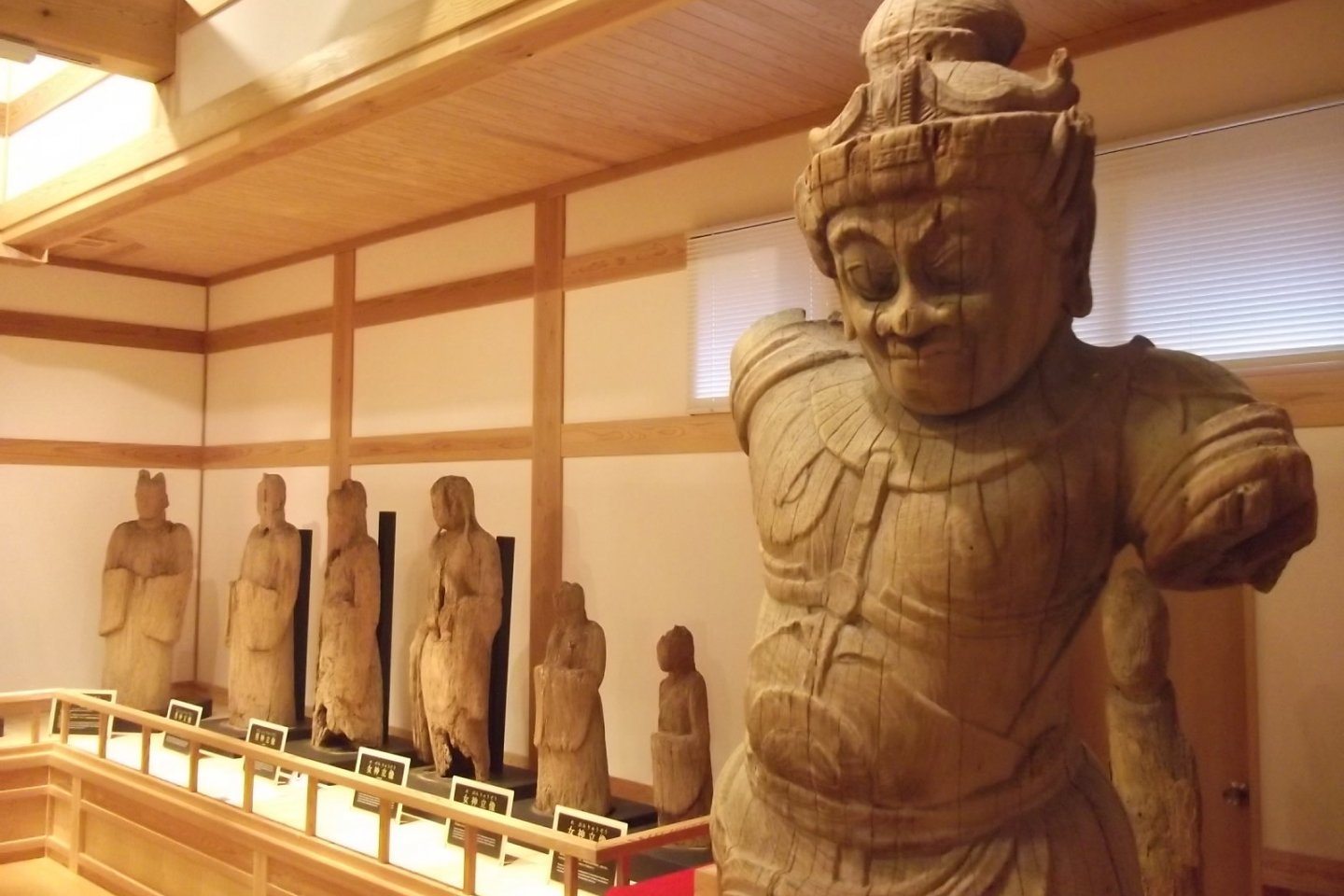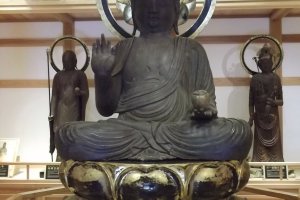Walking around Kawazu one morning, I found a sign directing me (and anyone else who saw it) to something called the Heian Buddha Statue Pavilion. I'd never heard of this, but I had time to spare and it sounded promising, so I decided to give it a look. I'm so glad I did! It's just a one-room museum, but absolutely fascinating and totally worth the visit.
The history: a Buddhist temple was founded on the site in 749CE, but was then buried in a landslide in 1432; the "Heian" of the museum's name is the Heian Period, from 794 to 1195, which would be when the statues were carved for the temple. A new temple was built on the site in 1541, and the statues were dug up at this time.
The layout of the museum mimics a temple: the main statue is on a dais in the centre, flanked by guardian demon generals, with the remaining statues displayed around the walls. There's a lot of wood, with four pillars and wooden beams supporting the ceiling, and traditional screen doors add to the atmosphere of calm.
There are a total of 24 statues on display, from the 9th, 10th and 11th centuries, in various states of preservation or deterioration; some of them are extraordinarily well preserved, some are missing limbs or other parts, some reduced to basic but recognisable forms. There are helpful, detailed explanations in English for every statue - except the main one! But the internet tells me that this is the oldest statue in Shizuoka, and depicts Yakushi Nyorai, the Buddha of medicine and healing.
These explanations give a lot of interesting insight into the forms and processes. Some of the statues were carved from single blocks of lumber, some were jointed, with separately added limbs, helmets, even faces. And despite some of the statues being badly deteriorated, the curators were able to extract information from features such as the stance, or the length of the hair. For example, hands folded inside long sleeves is a characteristic pose of a female deity in Shinto, not in Buddhism.
This really is a hidden gem; even if you're not interested in Buddhism particularly, there's still plenty to admire and enjoy about the craftsmanship, and just the sense of looking so far back in time.
































